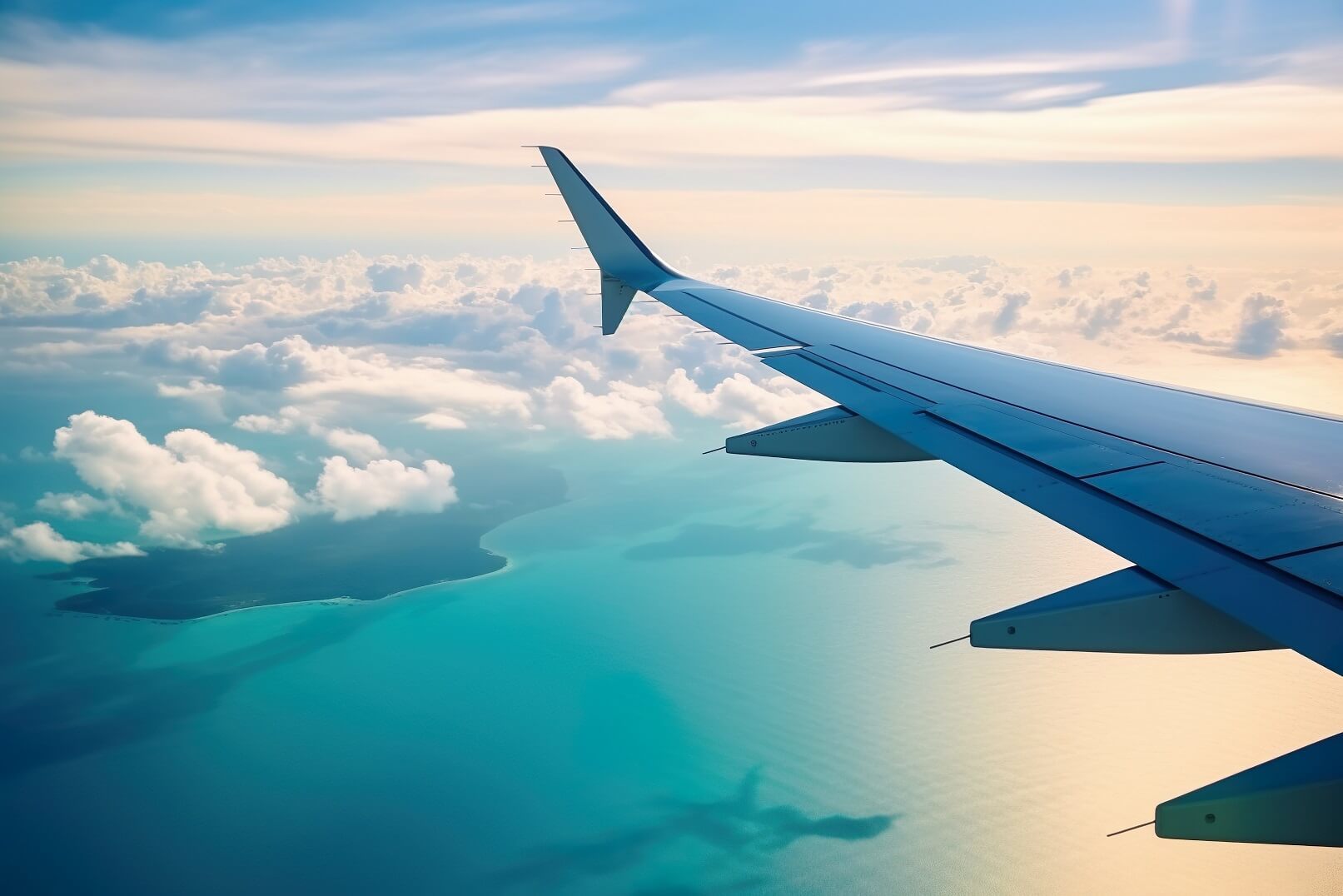The science of a flight: How do planes fly?

How do planes stay in the air?
Air travel has revolutionized the way we connect with the world, making it possible to traverse vast distances in a matter of hours. But have you ever wondered how a massive, heavy airplane manages to stay aloft and navigate the skies? The answer lies in the fascinating science of flight.
Lift and Bernoulli's principle
At the heart of aviation is the principle of lift, which enables an aircraft to overcome gravity and become airborne. Lift is generated by the shape of an aircraft's wings and the speed at which it moves through the air. This fundamental concept is explained by Bernoulli's principle.
Bernoulli's principle states that as the speed of a fluid (such as air) increases, its pressure decreases. Aircraft wings are designed with a unique shape known as an airfoil. The top surface of the wing is curved, while the bottom is flat. As air flows over the curved top surface, it has to travel a longer distance compared to the bottom surface, which creates a difference in air pressure.
This pressure difference results in an upward force, which is lift. In essence, the faster an aircraft moves, the more lift it generates, allowing it to overcome gravity and take flight.
Why do planes fly: Thrust and drag
While lift is essential for getting an aircraft off the ground, it's not the only force at play during flight. Thrust and drag are equally crucial.
Thrust is the forward force provided by an aircraft's engines. It propels the plane through the air and counteracts the resistance of air molecules. Engines, whether jet engines or propellers, create thrust by expelling air or exhaust gases at high speed in the opposite direction.
Drag, on the other hand, is the resistance an aircraft encounters as it moves through the air. Pilots and engineers work to minimize drag to increase fuel efficiency and speed. Streamlined design, smooth surfaces, and retractable landing gear all contribute to reducing drag.
Control surfaces and stability
In addition to lift, thrust, and drag, control surfaces play a vital role in flight. Aircraft have moveable surfaces on their wings and tail that allow pilots to control the aircraft's movement. The main control surfaces include:
Ailerons: Located on the wings, these control roll and bank movements.
Elevators: Positioned on the tail, elevators control pitch or the nose's up-and-down movement.
Rudders: Also on the tail, rudders are responsible for yaw or side-to-side movement.
Aircraft stability and control are maintained through the careful manipulation of these surfaces, allowing pilots to steer the plane and keep it on course.
How high do planes fly?
Commercial airplanes typically fly at cruising altitudes that range from 30,000 to 40,000 feet above sea level. These altitudes are chosen for several reasons, including fuel efficiency, reduced air resistance, and avoidance of turbulent weather systems. At such heights, aircraft can operate more efficiently due to the thinner air, while also benefitting from lower atmospheric pressure. This allows for smoother flights, reduced fuel consumption, and quicker travel times, making it the optimal range for long-distance air travel.
What speed do planes fly at?
The speed at which planes fly can vary depending on the type of aircraft and its purpose. Commercial airliners, such as those used for passenger travel, typically cruise at speeds ranging from 450 to 575 miles per hour (approximately 725 to 925 kilometers per hour). Faster planes like supersonic jets, such as the Concorde, could reach speeds of over 1,300 miles per hour (approximately 2,100 kilometers per hour). Military fighter jets, on the other hand, can reach speeds well above 1,000 miles per hour (approximately 1,600 kilometers per hour). The actual speed during a flight may also vary due to factors like altitude, wind conditions, and specific flight plans.
Flight continues to amaze
Understanding the science of flight is a testament to human ingenuity and engineering prowess. The principles of lift, thrust, drag, and control surfaces have been refined over decades of aviation history, leading to the incredible aircraft we have today.
The next time you board a plane, take a moment to appreciate the intricate science that makes it possible. Flight is not just about reaching your destination; it's a fascinating exploration of the laws of physics, the beauty of aerodynamics, and the remarkable achievements of human innovation.
In conclusion, the science of flight is a captivating blend of physics and engineering that enables us to soar through the skies with grace and precision. The principles of lift, thrust, and control surfaces come together to create the magic of aviation, allowing us to connect with distant places and experience the wonder of flight.
Latest posts
Mastering summer travel with your credit card: 10 essential tips
From transfer partners to trip insurance, here are ten tips to make your summer travel more affordable and enjoyable.
Top 10 travel booking portals for summer 2024
Renowned portals, tour operators, as well as meta search engines offer a vast array of choices.
AI takes flight in airline pricing
This innovative approach has attracted significant attention from major airlines such as Virgin Atlantic and Royal Air Maroc.
About MYFLYRIGHT
MYFLYRIGHT is a legal tech company, specialized in the support of airline passengers affected by flight delays, flight cancellations, denied boarding, delayed or lost luggage and the refund of unused airline tickets. MYFLYRIGHT was founded 2016 in Hamburg, Germany. The company operates out of 3 offices, its headquarter in Hamburg and its branches in Prague, Czech Republic and Zaporizhia, Ukraine. Currently, MYFLYRIGHT employs a team of around 25 people working in Marketing, Operations, Legal, Customer Support and IT. The organization operates across 5 markets – Germany, United Kingdom, Romania, Austria, and Switzerland.
MYFLYRIGHT’s goal is to provide access to justice for all aviation passengers who experience irregularities in their flight transportation. Notably, 75% of all compensation requests submitted by passengers get rejected. Whereas, MYFLYRIGHT is able to successfully execute the applicable customer claims in more than 98% of cases at court.












